

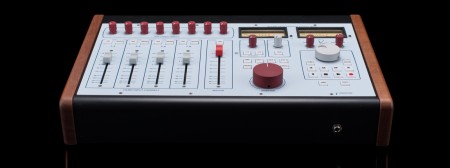



It’s not often that get very excited about modern audio equipment but when the name Neve is attached there’s always room for an exception. Rupert Neve Designs (not to be confused with AMS Neve) announced this week at Musikmesse a new desktop console dubbed the 5060. It’s meant to be a sort of studio centerpiece and features a 24×2 mixer with sends and transport control. There are other products out there that do this (the SSL Nucleus for one) but none do it while looking this good (although not quite as good as the original Neve Sidecar). Unfortunately, as is always the case with quality recording equipment, with a MSRP just under $8,000 USD the 5060 is way out of reach for all of us mortals and will most likely exist only in the world of medium to large sized professional studios. I guess I’ll just hold out hope that in 40 years I might find one at a garage sale of some lady who’s “son left it in the attic when he moved” or whatever cliche scenario it seems like everyone acquired their choice vintage gear via.
More info at Neve’s 5060 Page


Neve 5088
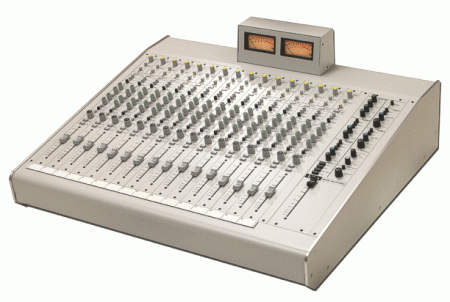
Speck LiLo
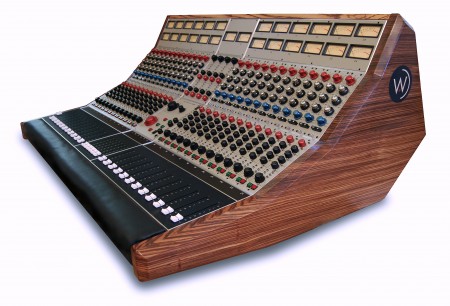
Wunderbar Console

API 1608

Toft ATB Series
All I’ve ever wanted was an analog desk. Since I started recording it was my goal to someday have a 24 track analog mixer to work with. I’m still not there yet, but the stuff you see above keeps me dreaming. These are some examples of a new type of analog console that a few boutique manufacturers have been releasing in recent years. Most are compact, relatively inexpensive ($30-40k instead of $500k+) analog consoles. They tend to be scaled down versions of classic large format consoles from the pre-digital age (the Toft ATB, for example, is a mini Trident, which was also designed by Malcolm Toft)
As a designer I find myself obsessing over the visual aspects of my musical equipment. Sometimes I wonder which I love most, how the machines look, or what they do. While I do think these newer machines are beautiful, I miss the old style interfaces which have shifted quite a bit from their original forms (see an example of an older Neve below).
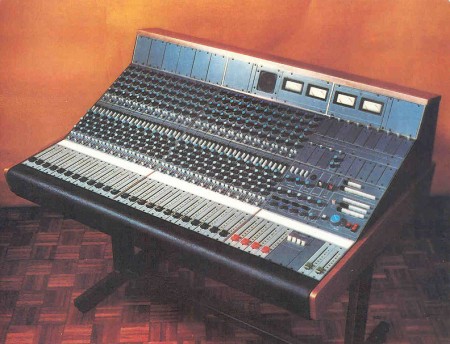
Neve 5315
This got me thinking about how little these machines have changed over the years and how I dislike even the most minor of those changes. I’m always amazed at how a subtle order has emerged over the years in pro audio interface design. It’s sort of like the mouse on PCs; the metaphors and interaction models have remained essential unchanged since inception yet no one seems to mind. I guess it’s a testament to how thoughtful the designers who pioneered these systems really were. Either that or we’re just slaves to habit.
At any rate, it’s all just fun to think about. The reality is that I don’t really need a desk like this. I’m rarely recording more than two tracks at a time so I have four channels of Neve clones and a patchbay — it sort of acts like a modular 4-track console (minus the faders and cool meter bridge). The only thing these would really come in handy for would be as a summing bus during mixdown and I have places I can get that done (although I do prefer having everything in-house).


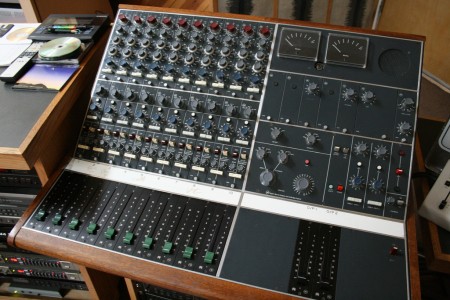
In the world of audio engineering, the name Neve has become almost mythical. Rupert Neve was responsible for a very popular EQ and preamp circuit design that helped produce many a hit record over the years. I personally love the Neve sound and record everything through a set of four Neve clones. While clones are great and can approach the sound of the original, they’re still not truly a Neve. So to see an actual Neve Sidecar show up on Ebay was a surprise. Just seeing pictures of these is pretty intense, I can’t imagine what it would be like to actually use one. To me, the color and design inspire a sort of reverence, kind of like the Futura of the sound engineering world; classic, refined, and functional. At any rate, a $40k mixer is just a dream…but what a nice looking dream.
















